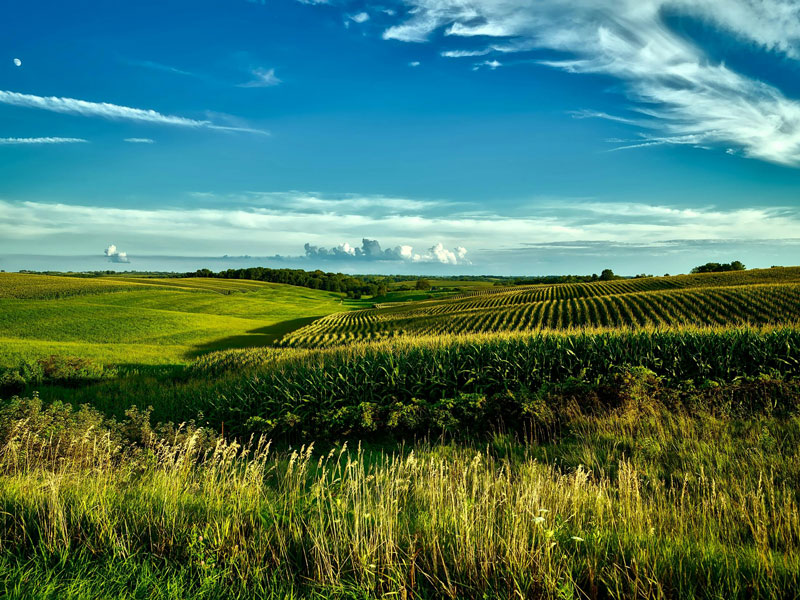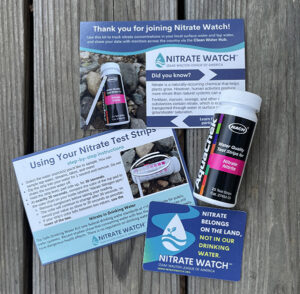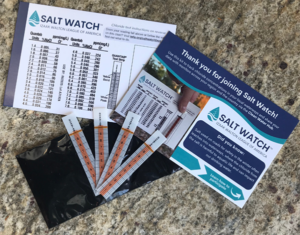Iowa has some of the richest and most productive soil in the world. In fact, over 85% of Iowa land is used for agriculture, which produces billions of dollars of exports annually for the state’s economy. Iowa ranks first in the United States in corn, hog, and egg production and second in soybean and oat production. The use of Iowa’s productive natural resources comes at a cost, however. Water quality issues, poor soil health, and decreased wildlife habitat are external costs that result from unsustainable land use in Iowa.

What’s Hurting Water Quality in Iowa?
Iowa is faced with myriad water quality issues, including sedimentation as a result of soil erosion, excessive nutrient loading from chemical fertilizers, and dangerously high fecal bacteria levels. Iowa’s poor water quality can lead to harmful algae blooms, fish kills, and human health problems that arise from recreating in and drinking polluted water.
Many of Iowa’s water quality problems can be traced to poor soil health, excessive application of agricultural chemicals, and runoff from commercial animal feedlots. Urban areas do contribute to water pollution as well, but Iowa has a relatively small population and urban areas make up only a small portion of Iowa’s landscape.
Iowa has one of the most altered landscapes in the world. Wetlands have been drained, streams have been straightened and diverted, streamside habitats have been shrunk or altered, and more than 99.9% of Iowa’s native prairies have been plowed under to make more space on the landscape for productive farms. Without these natural habitats to slow down and filter water and retain healthy topsoil, pollutants from the land can readily find their way into Iowa’s lakes, rivers, and groundwater. Additionally, the loss of habitat has created profound negative impacts on native wildlife populations, both on the land and in the water.
Volunteer Water Quality Monitoring in Iowa
Iowans have a long history of monitoring water quality. In 1924, water monitoring and advocacy by the Izaak Walton League led to successfully curtailing the unbridled pollution of the Cedar River. During the early 1920s, industrial and municipal sources polluted the Cedar River so badly that the water was too dangerous for livestock to drink. The League’s efforts resulted in the State Board of Health calling for a stop to the pollution.
From 1999-2017, the Iowa Department of Natural Resources facilitated the IOWATER program which trained and supported volunteer water quality monitors across the state. IOWATER volunteers monitored thousands of sites across Iowa and produced tens of thousands of data points. When the IOWATER was dissolved in 2017, these volunteers were left with no centralized training or support and no platform for data submission.
Save Our Streams in Iowa
The Izaak Walton League of America’s Save Our Streams (SOS) program has been at work around the country since 1969, and in 2019, the SOS program was reinvigorated in Iowa. SOS stepped up to create a new support system for statewide volunteer water quality monitoring in Iowa, filling the gap left in IOWATER’s absence.
Save Our Streams is a hub of training and water quality data in Iowa, facilitating the sharing of data and consolidating the efforts of county conservation boards and environmental organizations that monitor water quality. Since 2019, SOS has held dozens of field trainings in Iowa and certified over 150 new volunteers. We have also trained and certified additional Save Our Streams trainers in Iowa, increasing our capacity to train and support new volunteers.
Iowa Equipment Loan Network
To support a growing number of stream monitors, the Izaak Walton League established an equipment loan network in Iowa where volunteers can borrow monitoring supplies as needed. Supplies for Save Our Streams Chemical and Biological monitoring are located at equipment loan stations positioned throughout the state. Volunteers can borrow monitoring supplies from these stations for free, lessening the financial and logistical barriers to participation in Save Our Streams.
The Iowa SOS Equipment Loan Network is supported by funds from the Iowa DNR Resource Enhancement and Protection (REAP) Conservation Education Program.
Nitrate Watch in Iowa
One of the most pervasive and dangerous pollutants in Iowa’s waterways is nitrate. Nitrate occurs naturally in low concentrations, but excessive nitrate in water can cause environmental and human health risks. Nitrogen is typically the most abundant nutrient in chemical fertilizers used on farm fields, lawns, golf courses, and gardens, and this nitrogen becomes nitrate as it moves through the environment. Sewage, faulty septic systems, and animal feedlots can also be big contributors of nitrate.
In 2023, the Izaak Walton League launched the Nitrate Watch program. This crowd-sourced community science program mobilizes volunteers to monitor nitrate levels in surface water and drinking water. Volunteers receive free nitrate test kits, monitor nitrate pollution in waterways of their choice, and report their results on the Clean Water Hub database. The goals of Nitrate Watch are to raise awareness about the impacts of nitrate pollution on the environment and human health and ultimately advocate for solutions that reduce nutrient pollution. Each year, volunteers in Iowa report thousands of nitrate readings in streams, lakes, and drinking water sources statewide. The interactive map below showcases this year’s Nitrate Watch data. Each dot represents a monitoring site and the color of a dot reflects the water quality rating of the most recent nitrate data reported at that site – click on a site to view more information. Click here to view this data on the Clean Water Hub database.
What You Can Do
Volunteers have an important role to play when it comes to consistently monitoring Iowa’s streams and sharing their valuable water quality observations with the public. There have been many diverse approaches to addressing Iowa’s water pollution and soil health problems, but it is difficult to track the progress of these practices without more people monitoring our streams.
Save Our Streams has come a long way toward increasing volunteer monitoring in Iowa, but there is still work to do. You can help. Explore the links on this page to find opportunities to support and participate in the Izaak Walton League’s volunteer water monitoring efforts.
 Your kit will include a bottle containing 25 nitrate test strips which you can use to test your water source(s) throughout the year. You’ll also receive postcards explaining how to use your nitrate test strips and how to share your Nitrate Watch results on the Clean Water Hub.
Your kit will include a bottle containing 25 nitrate test strips which you can use to test your water source(s) throughout the year. You’ll also receive postcards explaining how to use your nitrate test strips and how to share your Nitrate Watch results on the Clean Water Hub. Your kit will include four test strips so you can test your waterway throughout the season. You’ll also receive a chart to help you interpret your results and a postcard with instructions for completing a Salt Watch test and reporting your findings.
Your kit will include four test strips so you can test your waterway throughout the season. You’ll also receive a chart to help you interpret your results and a postcard with instructions for completing a Salt Watch test and reporting your findings.